It’s as Rewarding as Seeing a Construction Project Completed
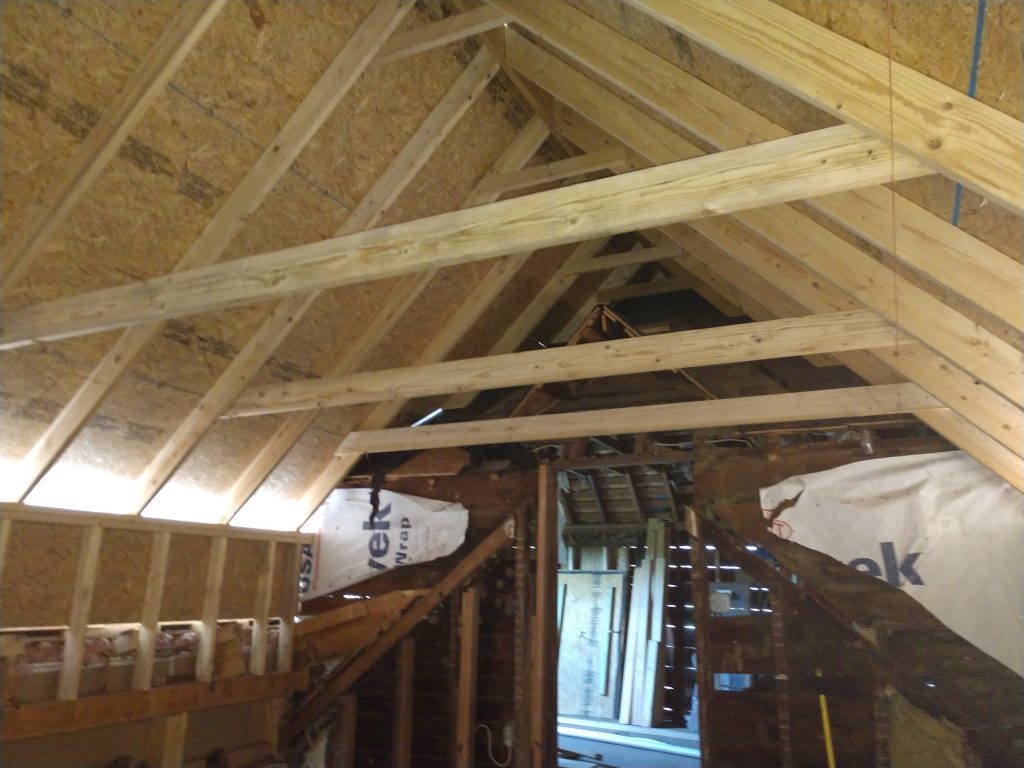
As John is driving to his weekly Saturday training with Gene, he remembers how hard it was in the beginning to convince himself to take the time to learn this system and how glad he was that he did. He thinks back over what he’s learned over the past several weeks:
- The digging down to figure out why he was doing construction and the importance of that clarity.
- The common bid mistakes that contractors make and how to avoid them.
- The different parts of the proposal system and how they fit together.
- Importance of gathering project information and not forgetting any of the different pieces of any project.
- Communicating clearly with the customer with a Scope of Work.
- Last week’s focus on how to price a project clearly and profitably.
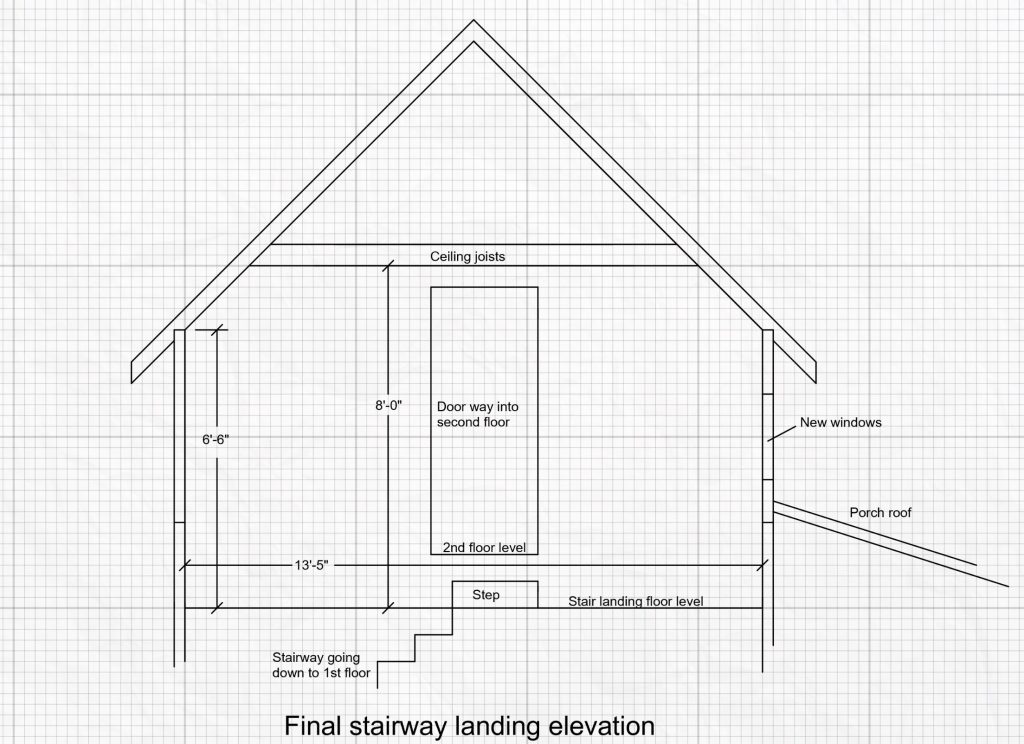
John’s getting excited as he pulls up to the XYZ Construction Company office. Today they are going to put all the pieces together, creating a finished proposal.
After Gene and John have some lunch and get caught up on the past week’s events, Gene asks John, “You know how exciting it is when you build a new home from blueprint? That is what we’re going to do today…we’re going to be seeing…
A proposal taken from blueprint to reality.
Let’s get started.
The final step in preparing the Proposal is to transfer the information you have gathered from the customer and prepared on the Scope of Work and the Worksheet to the Proposal template.
Start out by opening a Proposal template in the Blueprint for Building a Better Proposal system.
If you use a project number insert it behind the number sign at the top of the page, below the proposal title. Next insert the customer and project information in the open areas as it pertains to the project.
Insert your company name at the beginning of the introductory sentence.

Copy and paste the description of the work to be performed and material to be supplied from the Scope of Work in the body of the Proposal template.
Next, take the prices from the Worksheet for each individual task described on the Proposal and place it on the right side of the page. At the end of each section put the total price for that section. This allows the customer to see a price for each section, i.e. foundation, framing, roofing, etc.
Now that the description of the work to be performed, the materials to be used, the prices for each task, and the subtotals of each section have been placed on the Proposal, it’s time for the project subtotal to be inserted at the bottom. Insert a separate price for the sales tax below the subtotal. Sales tax rates will be determined by the location where the work is to be performed.
Now insert the project total after, “For the Sum Of:” on the Proposal both in written and numerical forms, this duplication (just like on a check) helps with clarity.
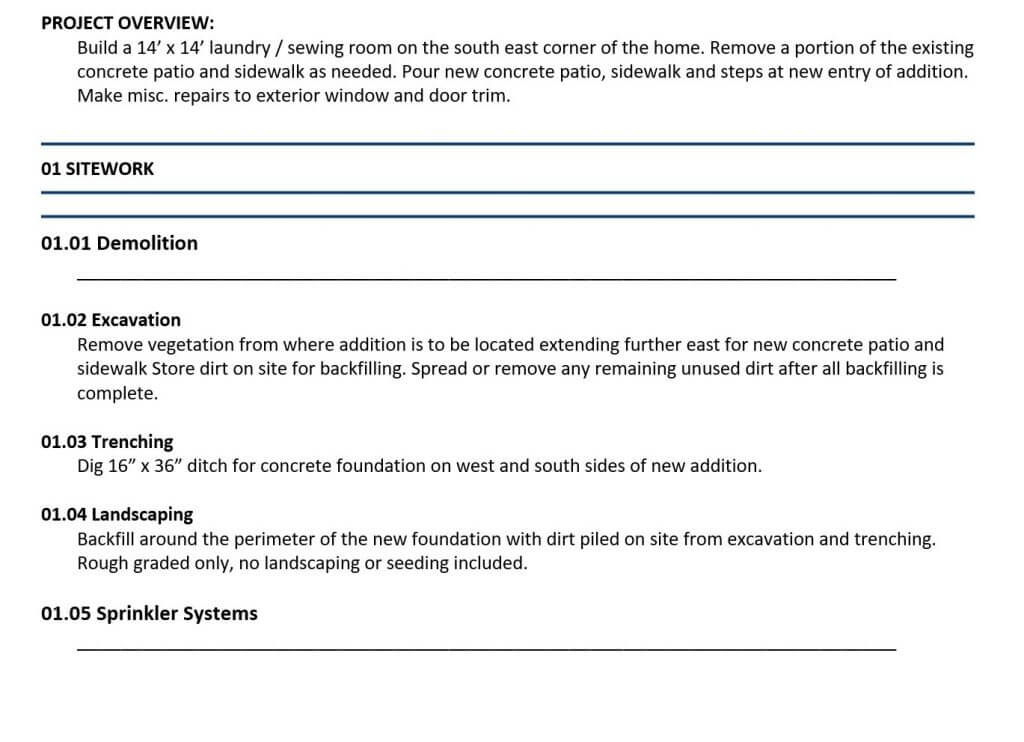
Now that you have a project total you need to determine how payments will be made. There are several different factors which can determine how this will be done, i.e. the size of the project, when material will be ordered and/or paid for, the financing of the project, your personal preferences, etc. This could be done at the completion of set production tasks, scheduled times (weekly, monthly, etc.) or when the project is finished.
Determining the date in which the Proposal will expire will be up to you. If the Proposal includes some materials that fluctuate in price often then you may want the expiration date to be sooner. A standard time frame is 30 days.
The duration of time to complete the project can be determined from the Worksheet. At the bottom of the Worksheet there are four cells, with corresponding amounts for each.
The Labor Price is the total amount of labor costfor the project. The Hours, is the total man hours needed for the project, dividing the hours by $60/hr. This hourly rate can be adjusted to whatever dollar amount you determine. The Days are the total hours divided by 7 hours of production per day. The Weeks are total working days divided by 5 days of production per week. You then have the number of working days needed to complete the project. This will then be entered into the corresponding blank space on the Proposal.
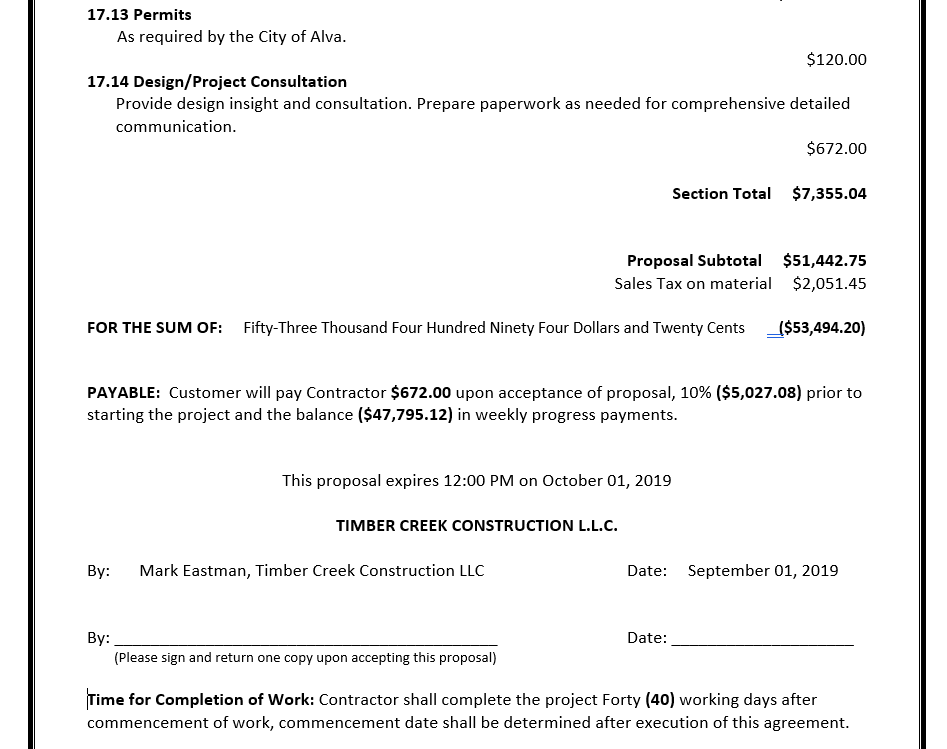
You now have completed the proposal
At this point I recommend going back through and proofreading the scope of work for each task, checking the math to make sure that the prices on the Proposal add up correctly. Don’t be surprised if a few of the numbers on the Worksheet totals are off a cent or two from the total on the Proposal. This happens sometimes due the combinations of formulas on the spreadsheet. The most important thing is that the prices on the Proposal add up correctly.
Now sign the proposal and deliver it to the customer.”
Gene looks over at John and asks, “Well what do you think?”
John smiles and says, “You’re right. It does feel like seeing a house where there wasn’t one before. It’s very satisfying.”
“Know this John, it’s also going to be similar to building the first house. You’re going to have questions, when you start using the proposal system. Start using it and let me know when you have questions. It will be tempting to go back to doing bids like you used to, but don’t.”
“Next week we’ll review and spend our time answering questions.
“Now go use this system and build better proposals.”
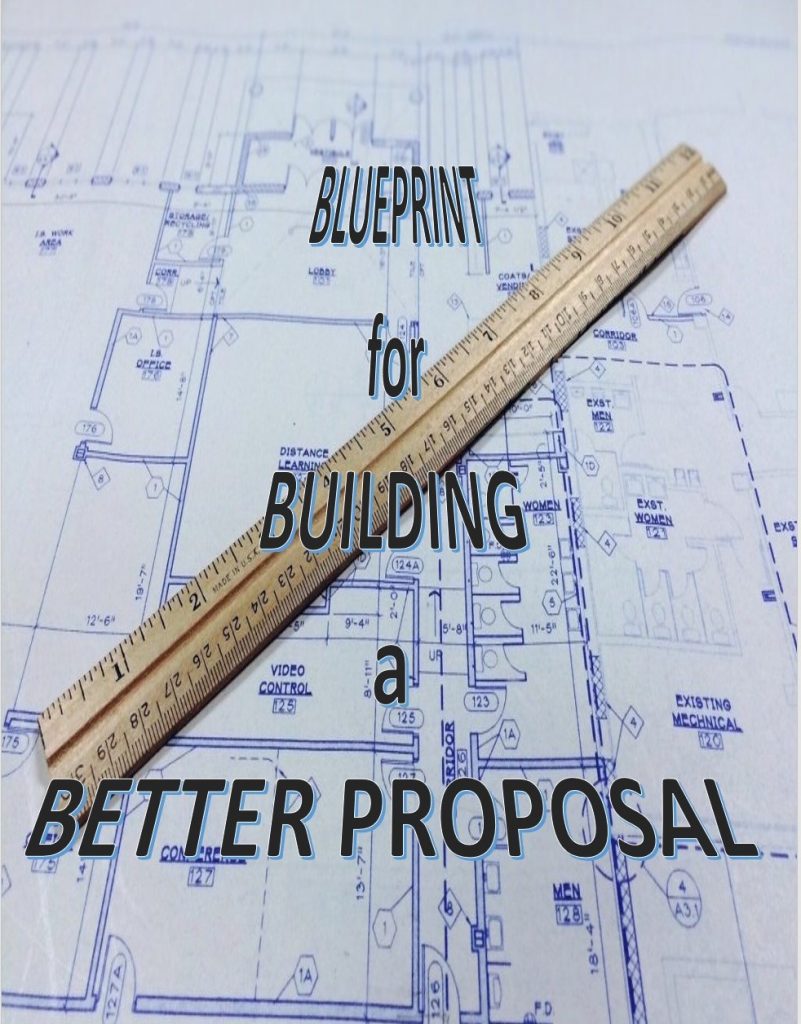
Previous posts in this series –
What is “business clarity” and how do you find it?
Learning How to Get a Construction Project Started Out Right
It’s Time for the First Meeting
Being Aware of the Common Bid Mistakes is the Best Way to Avoid Them
Constructing a Building is Better with a Plan, a Proposal is No Different
A Good Construction Proposal Starts by Asking the Right Questions
What is a Construction Scope of Work and Why Do You Need One?
Dollars and Cents Are What Make a Construction Project Profitable…or NOT

